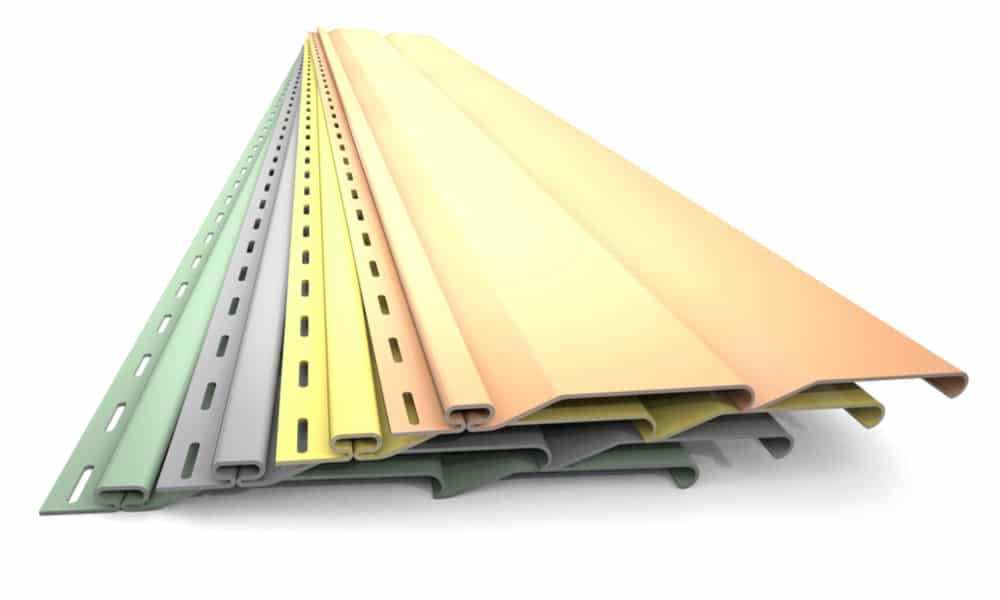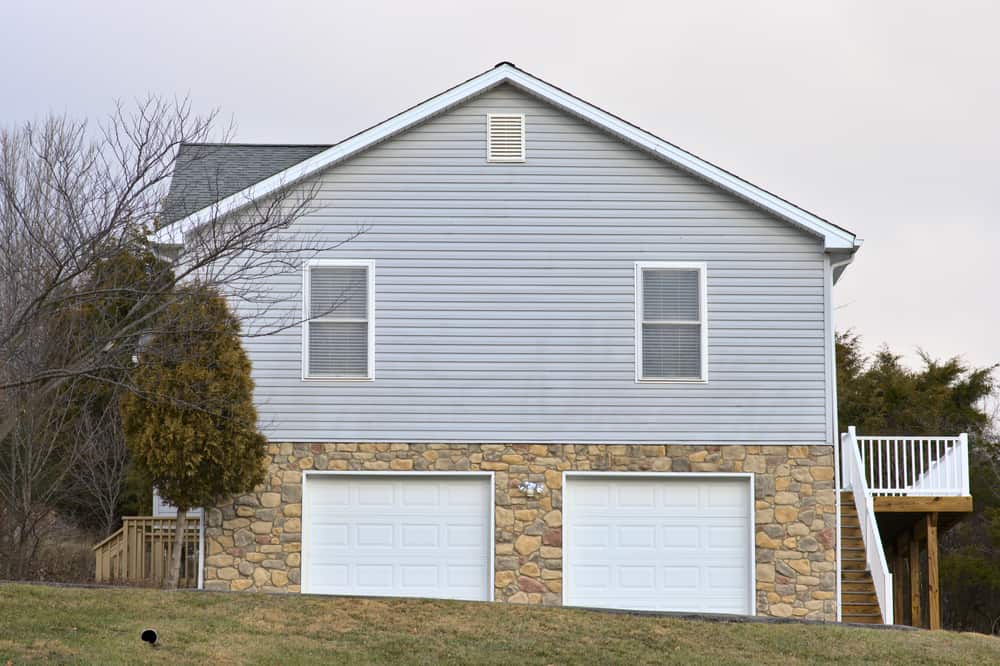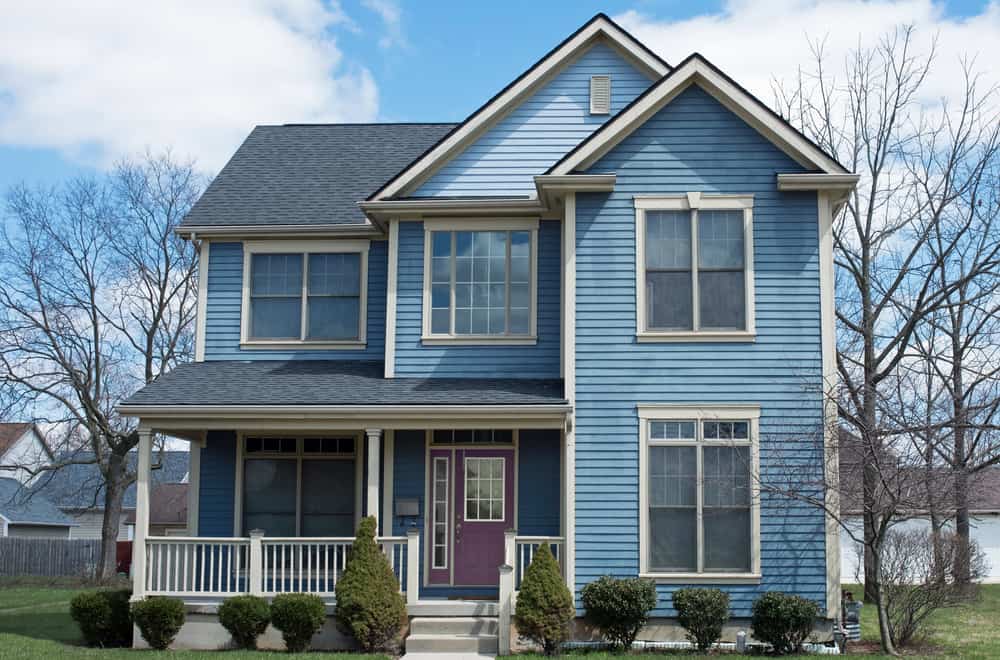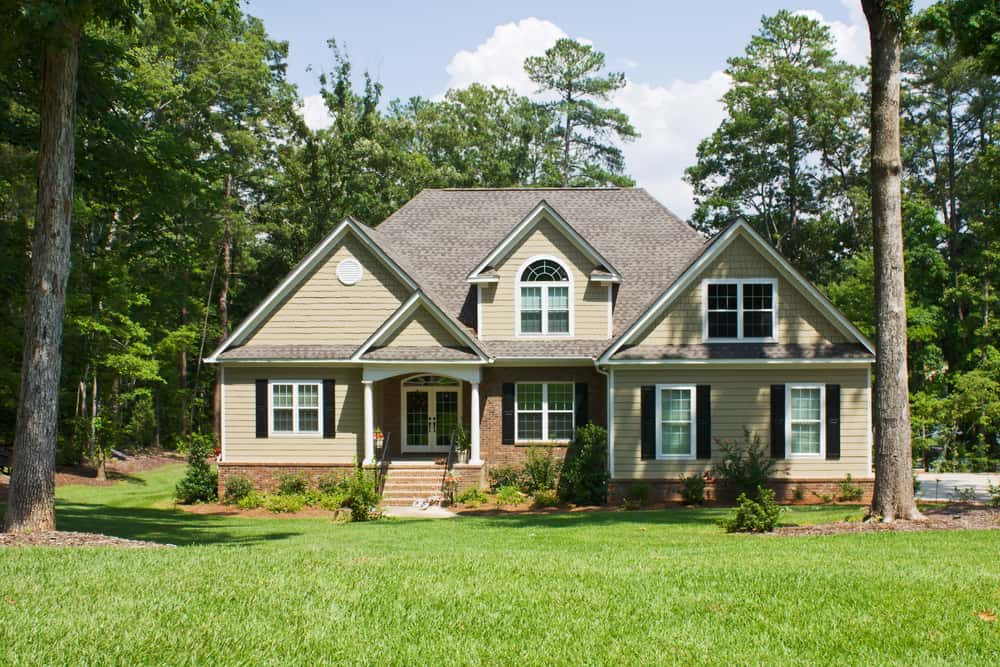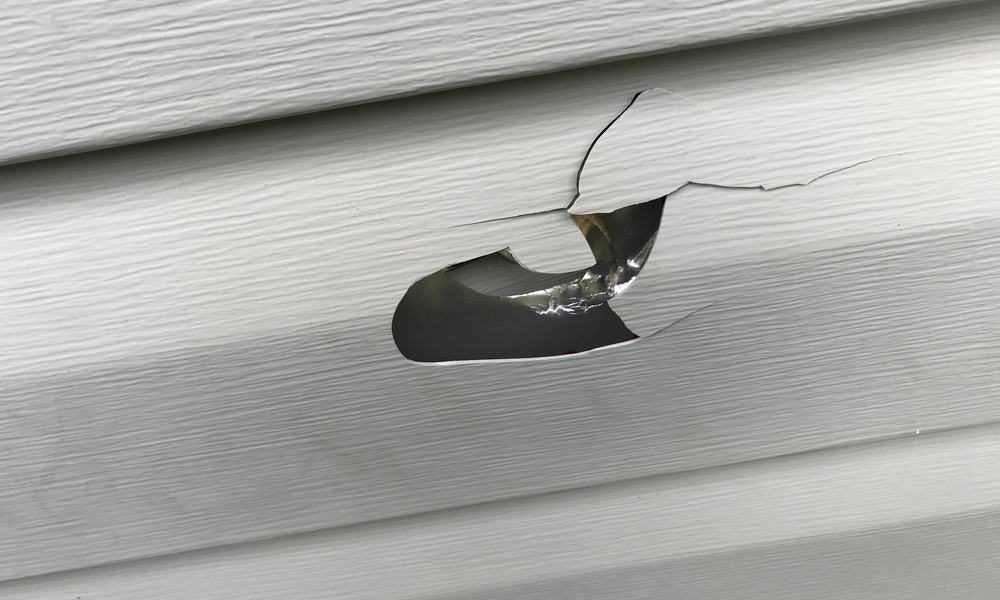The thickness of vinyl siding that you select for your home is an important decision. Therefore, I ask you to bring your local climate, average precipitation, and architectural preferences to mind.
We will discuss the various grades of vinyl siding, focusing on the benefits and costs associated with the thickness and overall quality that you select.
Table of Contents
The Era of Vinyl Siding
Vinyl siding first hit the market in the 1950s; however, it has become one of the most popular siding materials available.
With continuous improvement, manufacturers can now produce siding that indistinguishably mimics wood, lasting up to sixty years.
Although that is quite impressive, vinyl siding serves more than just an aesthetic purpose. Vinyl siding helps to protect the exterior of your home, thus, contributing to its overall lifespan.
Who Sets the Standard?
Firstly, anytime you purchase vinyl siding, look at the product’s packaging or fact sheets for a designation by the American Society of Testing and Materials (ASTM).
For over 120 years, ASTM International has been the leading authority to develop and publish standards and material classifications now recognized by over 140 countries worldwide.
Yep, you guessed it- there is a standard even dictating the minimum thickness for your vinyl siding. The ASTM’s Standard 3679 calls for a minimum thickness of 0.035 inches; however, professional installers highly recommend thicker siding.
Building Codes
The International Residential Code (IRC) is a comprehensive tool that regulates the construction of single-family houses, duplexes, and apartments buildings (provided that each is under three stories).
At the local level, your Building Codes Office “ensure(s) [that] building designs meet or exceed the minimum, legally-mandated code requirement.”
In addition, local building offices review plans and issue permits specific to your building or remodeling requests. Then at each critical juncture, an inspector will verify that your project adheres to the code.
Codes are in place to ensure the safety and welfare of your building and the people that occupy it. They “also ensure structural integrity; electrical, plumbing and mechanical system safety, as well as accessibility and practical and achievable levels of energy efficiency.”
* * *
ASTM International and the International Residential Code are critically complex organizations that empower society with safe and sustainable products and practices.
Why are they important?
If these organizations were inexistent, then you would be left without a decision regarding the thickness of your vinyl siding, nor would your home meet the minimum protection standards it needed from fires, hurricanes, windstorms, and other extreme events.
Less Money=More Problems
If you are willing to accept the level of quality that 0.035-inch thick vinyl siding has, you would be meeting minimum standards and could happily proceed with your project.
If this is your situation, then perhaps you on working on a very tight budget. However, the caveat to accepting this minimum standard is that you will be buying a product that offers minimal protection and insulation to your home.
Frankly, I would not settle for this thickness of vinyl siding if I were in your position. However, as is usually the case, price point often relates to quality, durability, and lifespan.
I have confidence in your ability to put aside the extra funding necessary to ensure higher grade products for your home with effective budgeting practice.
Vinyl Thickness
There are as many as six grades of thickness for your vinyl siding needs, so taking some extra time to make a careful decision would be prudent. Here are the six grades:
- Builder’s Grade- 0.40 mm
- Thin Residential Grade- 0.42 mm
- Standard Residential Grade- 0.44 mm
- Thick Residential Grade- 0.46 mm
- Super Thick Grade-0.50 mm
- Premium Grade- 0.52 to 0.55 mm
Generally, standard residential grade (0.44 mm) vinyl siding is the most commonly used choice for homeowners. While still cost-effective, it offers a good balance of protection and insulation.
Both building grade and thin residential grade vinyl siding will not hold up to heat penetration, as well as better insulated options. In addition, lighter grades of vinyl siding may more easily crack and warp.
Thicker vinyl siding offers the best insulation and protection for your home. In addition, thick and premium grade vinyl siding may last up to sixty years, double the life expectancy for average vinyl siding.
Pros of Thicker Siding
Thicker vinyl is best suited for colder and wetter environments because it often is the case that premium vinyl is insulation-backed. However, in general, thicker vinyl siding has several benefits, including:
- higher tensile strength and overall durability
- not prone to sagging due to enforced rigidity
- provides better noise-cancellation
- includes insulation
- reduced risk of warping
- higher wind ratings
It is also worth mentioning that thicker vinyl siding can hide common flaws in the underlying wall behind it. In addition, thinner vinyl siding is more susceptible to waves and other imperfections caused by climate.
Cons of Thicker Siding
- more expensive
- requires more tools for installation (in regards to cutting)
Vinyl Siding Thickness: Is It Worth Considering?
The pros of thicker vinyl siding will generally outweigh the cons. If you can afford to invest in a thicker material, you will extend the lifespan of your exterior surface and likely benefit from its noise-canceling and insulating properties.
Whether you decide to install builder’s grade or premium grade vinyl siding, here are a few more considerations to ponder:
1. Aesthetics
By choosing a thicker vinyl siding, you have access to premium aesthetic finishes. If you would like to add some rustic ambiance or bring back that classic American charm to your neighborhood, choose one of the following finishes:
- Board and Batten– unique vertical pattern
- Cedar Shake and Shingle Siding– straight or staggered cut
- Log Vinyl Siding– log cabin style
- Scalloped, Octogon, and Half-Cove Siding (farmhouse effect)
2. Water Intrusion
Thinner grade vinyl may be better suited for warmer climates. Some believe that insulated vinyl siding in warmer temperatures may retain heat and moisture behind your walls, thus causing mold and rot.
If mold and rot have manifested on your framing or interior walls, this is more likely due to a substandard cladding installation than the siding material itself.
For instance, the puncture holes created by installing a moisture barrier such as Tyvek HomeWrap are enough for moisture penetration to seep into your home’s framing.
A knowledgeable installer may advise using an approved vinyl siding tape to cover seams and other points that may allow water intrusion.
The fact of the matter is that moisture and water are intrusive. Therefore, I recommend that you carefully evaluate the siding contractors that are available in your area.
An experienced professional will offer you moisture protection options most suitable for your home and the siding you choose to adorn its exterior surface.
3. Resale Value
If you live in a historic neighborhood or an area with carefully preserved homes, “it is better to stick to whatever style and materials are traditionally used there.”
Although vinyl siding can almost indistinguishably mimic wood in today’s market, it can dramatically lower your home’s resale value.
However, if you have no plans to move, this may be of little to no concern for you.
4. Fading
Fading of your vinyl siding can be due to several issues. Most commonly, extreme UV exposure to one portion of your house will cause fading over time. However, shaded areas may also be the culprit of uneven fading.
Oxidation may also leave your vinyl siding with a chalky film. Although unsightly, you can get rid of oxidation by soft-washing your vinyl siding. A routine cleaning and maintenance program which includes regular washing will prevent any build-up of dirt and debris.
Unsafe chemical products used around your home’s exterior, such as pesticides and herbicides, may also stain your siding. Be careful to prevent the splashing of these products on your siding.
TIP: Choosing a lighter color of vinyl siding will help to hide fading. A darker-colored vinyl siding will absorb more harmful UV rays because it lacks the reflective properties of its counterparts.
5. Damage and Repair
Vinyl siding, regardless of thickness, can dent easily given a blow by a baseball or other hard object. Unfortunately, vinyl siding repair is complicated.
It is best to replace an entire siding panel than attempt to patch individual impact zones. However, some patching techniques are available if you prefer.
NOTE: If you have to replace some panels in your vinyl siding because of unsightly fading or a necessary repair, it isn’t easy to match the original color.
As you mull over these considerations, you will need to evaluate whether a less expensive product is worth sacrificing quality and warrantied lifespan.
Takeaway
Consider the long-term durability of thicker vinyl siding as you consider your budget. Although you may face a higher up-front cost, the alternative may end up costing you thousands of dollars in repairs for a lower-rated product that does not offer the same protection against the elements.
If you still do not feel ready to decide on the thickness of your vinyl siding, don’t hesitate to contact a professional siding contractor for advice on the best option for you.
Comment below with any questions or concerns regarding the thickness of vinyl siding for your home.
